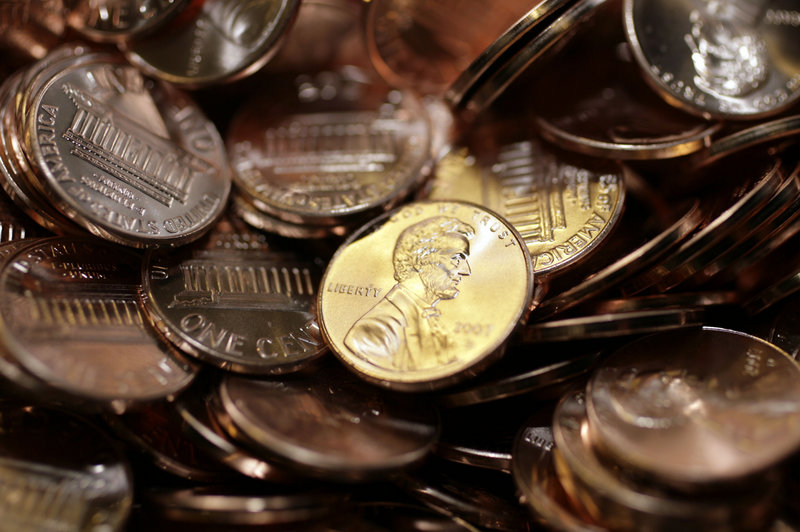PHILADELPHIA – When it comes to making coins, the Mint isn’t getting its two cents worth. In some cases, it doesn’t even get half of that. A penny costs more than two cents and a nickel costs more than 11 cents to make and distribute. The quandary is how to make coins more cheaply without sparing our change’s quality and durability, or altering its size and appearance.
A 400-page report presented last week to Congress outlines nearly two years of trials conducted at the Mint in Philadelphia, where a variety of metal recipes were put through their paces in the massive facility’s high-speed coin-making machinery.
Evaluations of 29 different alloys concluded that none met the ideal list of attributes. The Treasury Department concluded that additional study was needed before it could endorse any changes.
“We want to let the data take us where it takes us,” Dick Peterson, the Mint’s acting director, said Wednesday. More test runs with different alloys are likely in the coming year, he said.
The government has been looking for ways to shave the millions it spends every year to make bills and coins. Congressional auditors recently suggested doing away with dollar bills entirely and replacing them with dollar coins, which they concluded could save taxpayers some $4.4 billion over three decades. Canada is dropping its penny as part of an austerity budget.
To test possible new metal combinations, the U.S. Mint struck penny-, nickel- and quarter-sized coins with “nonsense dies” – images that don’t exist on legal tender (a bonneted Martha Washington is a favorite subject) but are similar in depth and design to real currency.
Test stampings were examined for color, finish, resistance to wear and corrosion, hardness and magnetic properties. That last item might be the trickiest, as coin-operated equipment such as vending machines and parking meters detect counterfeits not just by size and weight but by each coin’s specific magnetic signature.
Except for pennies, all current U.S. circulating coins have the electromagnetic properties of copper, the report said.
A slight reduction in the nickel content of our quarters, dimes and nickels would bring some cost savings while keeping the magnetic characteristics the same. Making more substantial changes, like switching to steel or other alloys with different magnetic properties, could mean big savings to the government but at a big cost to coin-op businesses, Peterson said.
The vending industry estimates it would cost between $700 million and $3.5 billion to recalibrate machines to recognize coins with an additional magnetic signature. The Mint’s researchers reached a lower but still pricey estimate of $380 million to $630 million.
Another challenge for the Mint is the rising cost of copper (used in all U.S. coins) and nickel (used in all except pennies).
Pennies may not be cost-efficient, but they won’t be getting pinched as long as they’re in demand.
“We produce 6 billion pennies a year,” Peterson said. “Our customers want them.”
Send questions/comments to the editors.



Success. Please wait for the page to reload. If the page does not reload within 5 seconds, please refresh the page.
Enter your email and password to access comments.
Hi, to comment on stories you must . This profile is in addition to your subscription and website login.
Already have a commenting profile? .
Invalid username/password.
Please check your email to confirm and complete your registration.
Only subscribers are eligible to post comments. Please subscribe or login first for digital access. Here’s why.
Use the form below to reset your password. When you've submitted your account email, we will send an email with a reset code.